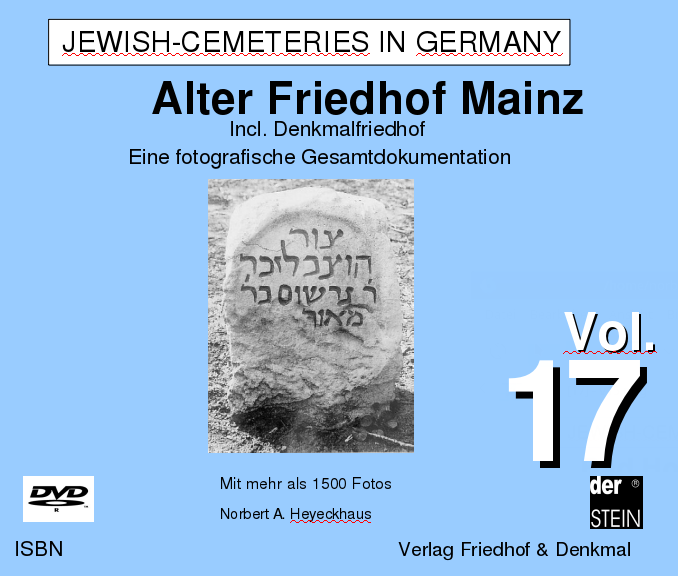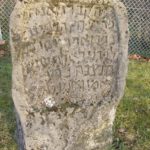
Old jewish cemetery Mainz
Denkmalfriedhof Mainz
The old ‘Judensand’ Jewish cemetery is situated on a former Roman burial ground, alongside a Roman arterial road. Although a first documentary mention was only made in 1286, this area was already in use as a Jewish burial ground in the 10th century by Jews who had migrated to Mainz where they formed a community. During the progressive stage of development in the Middle Ages, ‘Jewish’ Mainz, or ‘Magenza in Hebrew, experienced a high point of development and represented the centre of Jewish culture in central Europe. As a consequence of the dissolution of the Jewish community in 1438, gravestones from the Middle Ages were carried off and used in part during the following centuries for the construction of local fortifications in the town and along the Rhine.
It was only in 1583 that a re-established Jewish community was able to once again make use of the ‘Judensand’ for burials, until it was closed in 1880.
In 1926 Rabbi Sali Levi established a memorial cemetery in the upper part of the ‘Judensand’ containing more than 188 gravestones from the Middle Ages period, which had been recovered from within the city area. Amongst these are those of outstanding ‘Magenza’ personalities of this period, such as the scholars Gershom bar Jehuda and Meschullam ben Rabbana` Rabbi Kalonymos. The oldest datable Jewish gravestone stems from the year 1049, which is accepted as the oldest datable gravestone in Central Europe. It is exhibited in the Mainz State museum since 1997.
Der alte Jüdische Friedhof „Am Judensand“ befindet sich auf einem vormals römischen Gräberfeld entlang einer römischen Ausfallstraße. Trotz erster urkundlicher Erwähnung im Jahre 1286 wurde das Friedhofsgelände wohl bereits im 10. Jahrhundert von der in Mainz angesiedelten Jüdischen Gemeinde belegt. Im Hochmittelalter erlebte das Jüdische Mainz , hebräisch Magenza, eine Blütezeit und bildete das kulturelle Zentrum des Judentums in Mitteleuropa. Infolge der Auflösung der Judengemeinde 1438 wurden die mittelalterlichen Grabsteine verschleppt und in den darauf folgenden Jahrhunderten zum Teil als Baumaterial bei der Stadt- und Rheinbefestigung verwendet.
Erst im Jahr 1583 begründete sich die jüdische Gemeinde neu und bestattete ihre Toten wieder auf dem Judensand bis zur Schließung im Jahre 1880.
Rabbiner Sali Levi errichtete 1926 auf dem oberen Teil des Judensands ein Denkmalfriedhof mit über 188 im Stadtgebiet aufgefundenen mittelalterlichen Grabsteinen, darunter die herausragender Persönlichkeiten aus dem mittelalterlichen Magenza wie die Gelehrten Gerschom bar Jehudah und Meschullam ben Rabbana` Rabbi Kalonymos. Der älteste jüdische Grabstein stammt aus dem Jahre 1049 und gilt als der älteste datierbare jüdische Grabstein Mitteleuropas. Seit 1997 ist er im Landesmuseum Mainz ausgestellt.
ISBN: 978-3-938454-22-0
Incl. over 1400 photos
Old jewish Cemetery Mainz
Table of Contents
Toggle




